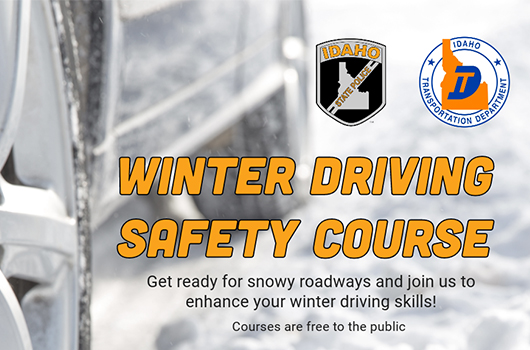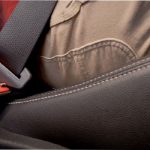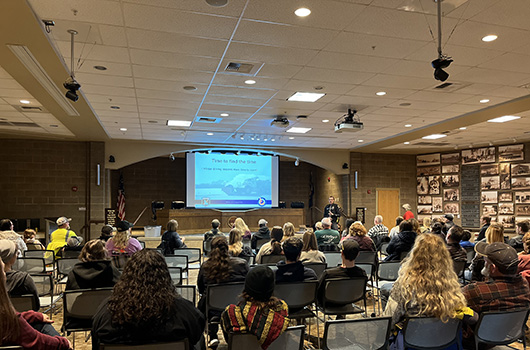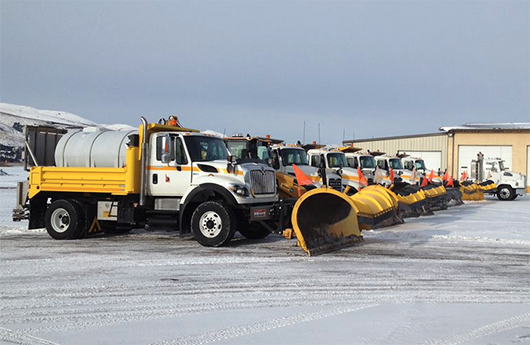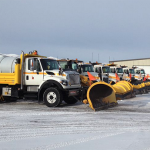For the first time ever, the Idaho Transportation Department and the Idaho State Police are teaming up to offer free, informative, and engaging winter driving safety classes in the Treasure Valley to help drivers prepare for icy roads and snowy conditions. This new initiative is designed to help drivers of all ages and experience levels navigate Idaho’s winter roads safely.
With many new residents in the Treasure Valley, there’s an increasing need for education on how to handle winter driving conditions. While the course is open to all drivers, it is particularly geared toward young drivers and those new to the area who may be facing their first winter driving season.
The class will be taught by ISP troopers and ITD operators, covering a wide range of important topics, including:
- Proper vehicle preparation
- Equipment for winter driving
- Understanding road conditions
- Driving tips for snow and ice
- How to handle crashes
- Snowplow safety
Seating is limited, and classes are filling up quickly. Attendees must register online to reserve a seat. Click here for Wednesday night class or click here for the Saturday morning class. Additional courses may be scheduled at a later date.
Class Schedule:
Wednesday, Dec. 4
6 p.m. – 7:30 p.m.
ITD District 3 Building, 8150 W. Chinden Blvd., Boise, ID
Saturday, Dec. 7
11 a.m. – 12:30 p.m.
ITD District 3 Building, 8150 W. Chinden Blvd., Boise, ID
*New class added!*
Register for Wednesday, Dec. 11
6 p.m. – 7:30 p.m.
ITD District 3 Building, 8150 W. Chinden Blvd., Boise, ID
Winter weather can be unpredictable, especially on the roads. As a driver, your first and last line of defense is your seat belt. Starting today, more police officers will be on the roads for a statewide seat belt enforcement campaign.
From Friday, November 22 through the end of the month, over 50 state and local law enforcement agencies are partnering with the Idaho Transportation Department’s Office of Highway Safety (OHS) for extra patrols focused on seat belt safety.
During the winter there is a lot that is outside of our control, from the weather to the behavior of other drivers. “What happens in your car is totally under your control, so slow down, drive engaged and buckle up. Let your seat belt do its job of saving your life in the event of a crash,” explained OHS Occupant Protection Program Specialist Tabitha Smith.
If you are in a crash, a buckled seat belt reduces your risk of death by 45% and risk of serious injury by 50%. Last year, 85 people in vehicles who were not buckled up died in traffic crashes.
Data from OHS’s annual seatbelt survey shows that 86% of Idahoans wear their seatbelts. Expect to see more police on the roads in the next few weeks focusing on stopping and educating drivers about seat belt safety, and hopefully saving lives.
The Idaho Transportation Department and Idaho State Police are teaming up to provide a free, informative and engaging winter driving safety class next Thursday as the region prepares for icy roads and adverse weather.
While this course is beneficial for drivers of all ages and skill levels, it is especially geared to young drivers and anyone new to the area who may be preparing for his or her first winter driving season.
Courses will be taught by ISP troopers and ITD operators, covering a wide range of topics from proper vehicle preparation, equipment, road conditions, crashes, and snowplow safety. Participants who attend the course will receive a certificate of completion and be eligible for a 10% discount on a set of new snow tires at the Twin Falls Blue Lakes Les Schwab Tire location.
Thursday, November 14
5:30 p.m. – 7 p.m.
Idaho State Police Department
418 W Yakima Ave
Jerome, ID
Seating is limited. Attendees must register online to reserve a seat. Additional courses may be scheduled at a later date.
The Idaho Transportation Department and Idaho State Police are teaming up to provide a free, informative and engaging winter driving safety class on Nov. 20 in Lewiston as the region prepares for icy roads and adverse weather.
While this course is beneficial for drivers of all ages and skill levels, it is especially geared to young drivers and anyone new to the area who may be preparing for his or her first winter driving season.
The course will be taught by ISP troopers and ITD operators, covering a wide range of topics from proper vehicle preparation, equipment, road conditions, driving tips, crashes and snowplow safety.
WEDNESDAY, NOVEMBER 20
3 – 4:30 PM
A Neil DeAtley Career Technical Education Center
3201 Cecil Andrus Way
Lewiston, ID 83501
Seating is limited. Attendees should register online.
Additional courses may be scheduled at a later date.
The Idaho Transportation Department (ITD), Idaho State Police (ISP), as well as Chubbuck and Bonneville County Police Departments are teaming up to provide free, informative and engaging winter driving safety classes through November as the region prepares for icy roads and adverse weather.
While these courses are beneficial for drivers of all ages and skill levels, they are especially geared to young drivers and anyone new to the area who may be preparing for their first winter driving season.
The course will be taught by ISP Troopers, local law enforcement officers and ITD Operators, covering a wide range of topics from proper vehicle preparation, equipment, road conditions, driving tips, crashes, and snowplow safety.
Participants who attend the course will receive a certificate of completion and be eligible for a 10% discount on a set of new snow tires at participating Les Schwab Tires locations.
THURSDAY, NOVEMBER 7
7:00 p.m. – 8:30 p.m.
Rocky Mt, Middle School Auditorium
3443 N. Ammon Rd.
Idaho Falls, ID
TUESDAY, NOVEMBER 12
5:30 p.m. – 6:30 p.m.
Chubbuck City Hall
290 East Linden Ave.
Chubbuck, ID
Seating is limited and classes are filling up quickly! Attendees should register online-click here for the Idaho Falls class or click here for the Chubbuck class to reserve a seat. Additional courses may be scheduled at a later date.
Idaho’s eighth graders have just one week left to help name the Idaho Transportation Department’s snowplows! The first annual ITD Name a Snowplow contest ends on Thursday, October 31.
Eighth grade teachers are invited to submit a name picked by their classes to ITD. Those names will be voted on by ITD employees, and 12 names will be chosen for snowplows this year. ITD chose to ask eighth graders for the names because they are close to getting their learner’s permits and entering driver’s education.
ITD is collecting names through an online form (please only submit if you are teacher or homeschool parent). Educational materials about snowplow safety were also provided through the Department of Education newsletter. If you missed them, email itdcommunication@itd.idaho.gov for a copy.
Contest winners will be announced by early January. The names will be featured on the plows’ blades. The winning classrooms will receive recognition and a special visit from the snowplow they helped name.
Full contest rules can be found on ITD’s website.
The Idaho Transportation Department (ITD) and Idaho Department of Education are working together to kick off the first ever annual ‘Name a Snowplow’ contest. Other states and highway departments across the country conduct similar campaigns with great success.
Starting October 1, eighth grade students across Idaho are invited to participate with their classrooms to submit a name. Contest entries will be accepted through the month of October with winning names announced by 2025.
“Our snowplow drivers are very thankful to schools that are able to join this fun educational opportunity and help increase winter driving safety awareness!” ITD Chief Operations Officer and Deputy Director Dan McElhinney said.
Two plows in each of six Idaho regions will be selected through voting by ITD employees. Winning names will be displayed directly on ITD plows, with winners awarded a visit to their school by that plow and driver to talk about winter safety. News media will also be invited to attend plow naming events.
This contest is a partnership between ITD and the Idaho Department of Education for teachers in eighth grade classrooms to opt in, with the hopes of sharing winter driving safety messages as this age group will soon be in driver’s education classes. Another goal of adding unique names on plows is to cause all drivers to take a second look and be patient when driving through the winter.
“This contest is such a fun way to engage students with a safety message that’s essential to our young drivers, especially as the weather cools and winter approaches,” Idaho Superintendent of Public Instruction Debbie Critchfield said. “I’m grateful for the partnership with the Idaho Transportation Department and am definitely looking forward to seeing some student-named plows on the road this winter.”
More information regarding the contest winners and plow naming events will be released once the submission and voting deadlines have passed.
Contest rules can be found on ITD’s website.
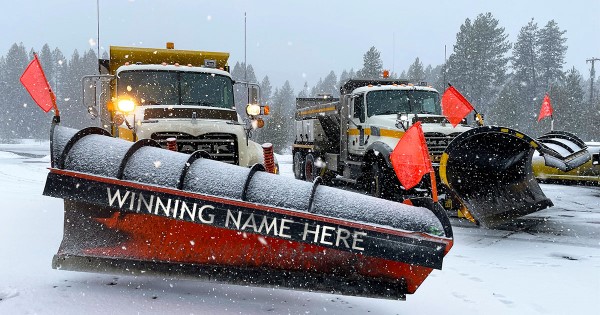
Flying cheerios, missing socks— backseat riders can get a little out of control. One thing you can control is your child’s safety. It’s National Child Passenger Safety Week (September 15-21) and a great time to make sure your child’s car seat fits. The Idaho Office of Highway Safety (OHS) has partnered with organizations around the state for National Seat Check Saturday on Saturday, September 21, 2024.
Last year in Idaho there were 2,538 crashes involving a child passenger between 0-6 years old. 515 of those kids were unrestrained in the vehicles. Two children died, one was in a car seat, and one was not.
A National Highway Traffic Safety Administration (NHTSA) study found that while most parents and caregivers believe they know how to properly install their car seats, about half (48%) have installed their child’s car seat incorrectly. An appointment with a professional Child Passenger Safety (CPS) technician can go a long way in protecting kids and giving parents peace of mind.
“CPS technicians undergo extensive training,” says Tabitha Smith, Program Manager for Occupant Protection in Idaho and former CPS Technician. “It’s not something that’s taught in a couple-hour class. It’s three to four days long. So when we send people to technicians, they truly know what they’re talking about.”
This week in Idaho there are many free seat check events coming up on Seat Check Saturday and beyond:
| North Idaho |
|
|
|
|
| Agency |
City |
Address |
Date |
Time |
| Safe Start /St. Mary’s Health |
Cottonwood |
701 Lewiston St, Cottonwood, ID 83522 |
9/19/2024 |
1 pm to 4 pm |
| Southwest Idaho |
|
|
|
|
| Agency |
City |
Address |
Date |
Time |
| Thrive Pediatrics Pinnacle Clinic |
Meridian
|
1435 E. Phenomenal St.
Meridian, ID 83642 |
9/28/24 |
9 am to 1 pm |
| Kuna Fire |
Kuna |
150 W Boise St, Kuna, ID 83634 |
9/21/2024 |
10 am to 4 |
| Mountain Home Air Force Base |
Mountain Home |
355 Alpine St, Mountain Home AFB, ID 83648 |
9/21/2024 |
Call for Appointment
208-828-7349 |
| St. Luke’s |
Meridian |
500 S Eagle Rd.
Meridian, 83642 |
9/21/24 |
10 am to 2 pm |
| Emmett Fire |
Emmett |
231 S Washington Ave, Emmett, ID 83617 |
9/21/2024 |
9 am to 12 pm |
| McCall Fire |
McCall |
201 Deinhard Ln, McCall, ID 83638 |
9/21/2024 |
9 am 2 pm |
| East Idaho |
|
|
|
|
| Agency |
City |
Address |
Date |
Time |
| Oneida – Nell Redfield Hospital |
Malad City |
150 200 W, Malad City, ID 83252 |
9/20/2024 |
10 am |
| Caribou County Sheriff |
Soda Springs |
475 E 2nd S, Soda Springs, ID 83276 |
9/21/2024 |
11 am |
| Blackfoot PD |
Blackfoot PD |
501 N Maple St #410, Blackfoot, ID 83221 |
9/21/2024 |
11 am |
| Grease Monkey Idaho Falls |
Idaho Falls |
2100 Channing Way, Idaho Falls, ID 83404 |
9/28/2024 |
10 am to 2 pm |
| Teton Valley Health |
Driggs |
120 E Howard Ave, Driggs, ID 83422 |
9/28/2024 |
9 am to noon |
At these seat check events, certified child passenger safety technicians will check if a car seat is the right type for a child’s age and size, check that it fits correctly, and that it is properly installed in the vehicle.
Several organizations also provide seat check appointments year-round. Visit OHS’s online map to find a provider near you and make an appointment.
For more details on what to expect at a seat check appointment, check out OHS’s blog.
Eighty-two* lives were lost in traffic crashes during the 100 Deadliest Days on Idaho roads. The Idaho Office of Highway Safety (OHS) has preliminary data on this year’s 100 Deadliest Days, when there is a spike in fatal and serious injury crashes across the state. From Memorial Day through Labor Day more people are out of school or work, on vacation, and celebrating. Risky driving behaviors like distracted driving, impaired driving, and speeding increase.
The 82* people killed this summer is slightly fewer than the 93 people killed during the 100 Deadliest Days last year. For all of 2024 so far 156* people have died in traffic crashes, compared to 165 last year. 2023 was the deadliest year for traffic crashes in over a decade.
“While there were fewer crashes than last summer, we still lost 82 people during the 100 Deadliest Days. Every traffic death is a tragedy, and we can do more to prevent them,” said Highway Safety Manager Josephine Middleton. “Whether we are driving for work or fun, we can always drive engaged, always drive sober, and obey speed limits so that we don’t lose more Idahoans to traffic crashes.”
Top 10 Contributing Circumstances for crashes during the 100 Deadliest Days (in no particular order):
- Fail to maintain lane
- Speeding
- Alcohol impairment
- Inattention
- Fail to yield
- Crossed centerline
- Overcorrecting
- Following too close
- Improper turn
- Drug impairment
100 Deadliest Days deaths* by ITD District and County:
District 1
- Kootenai – 5
- Bonner – 3
- Boundary – 2
- Shoshone – 2
- Benewah – 0
District 2
- Idaho – 4
- Nez Perce – 3
- Clearwater – 1
- Latah – 0
- Lewis – 0
District 3
- Ada – 9
- Canyon – 8
- Payette – 4
- Owyhee – 2
- Gem – 1
- Elmore – 1
- Adams- 0
- Valley – 0
- Washington – 0
- Boise – 0
District 4
- Twin Falls – 6
- Gooding – 4
- Lincoln – 2
- Jerome – 2
- Cassia – 1
- Camas – 0
- Blaine – 0
- Minidoka – 0
District 5
- Bannock – 3
- Power – 2
- Bingham – 1
- Bear Lake – 1
- Caribou – 0
- Oneida – 0
- Franklin – 0
District 6
- Bonneville – 9
- Clark – 2
- Lemhi – 1
- Fremont – 1
- Madison – 1
- Teton – 1
- Butte – 0
- Custer – 0
- Jefferson – 0
*All 2024 data is preliminary and subject to change
Police and sheriffs’ departments from across the state are joining the Idaho Office of Highway Safety (OHS) in a Labor Day Impaired Driving Mobilization. Expect to see more officers on the road now through September 2 to stop impaired drivers before they hurt themselves or someone else.
Labor Day also marks the end of the 100 Deadliest Days on Idaho Roads. It’s the time when Idaho sees a rise in impaired, distracted and aggressive driving that leads to more injuries and deaths on our roads.
At the start of the summer there were a lot of deadly crashes. The number of fatalities was trending above the previous year, however the rate of deadly crashes slowed after the Fourth of July. Currently 70* people have been killed on Idaho roads this summer, that’s less than last summer at this time, when the total was 79. This year-to-date 145* people have been killed in traffic crashes, compared to 151 at this time in 2023. In 2023 there were 275 total traffic deaths, the deadliest year in over a decade.
“Every crash is a tragedy, and in the case of impaired driving crashes, they are always preventable,” explained Highway Safety Manager Josephine Middleton, “We partner with police to stop drunk drivers from hurting people, but everyone can have a positive impact by getting a sober ride home instead of driving impaired.”
*Preliminary data, subject to change
